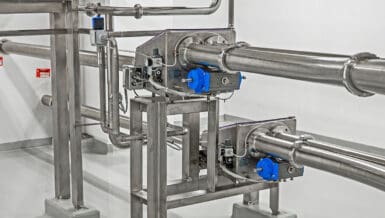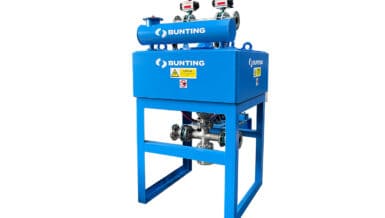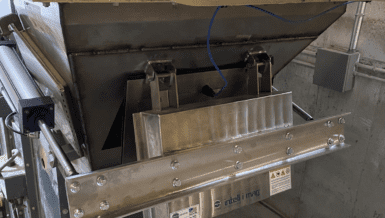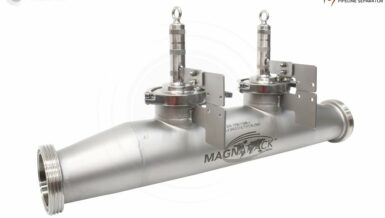In this video we demonstrate how work-hardening stainless steel makes it become magnetic and gives you the ability to collect it from your product stream with the use of magnets.
A substantial amount of metal contamination in food processing originates from stainless steel. This happens when processing machinery, which is usually made of stainless steel, gets worn. This can happen in a variety of ways, but whether a piece of equipment snaps off or dust-like magnetic contaminants become introduced to the product from mixers or grinders, the good news is, there is an easy and effective solution to the problem.
Installing magnetic separators ensures that this issue is targeted throughout various points of the food process.
Magnets can be installed upstream of processing equipment with the purpose of equipment protection, so that any damaging magnetic contaminants are collected prior to entering the equipment and causing damage. This solution can not only save you a lot of money on repairs or replacements in the long run, but will also greatly reduce costs associated with shutdowns and product wastage.
Magnetic separators should always be installed as far down the process as possible where product is conducive to effective metal separation. This means that prior to packing, you want to ensure that your product is as metal-free as possible by having a magnet pick up the metal contamination from the final product. Having a strong, good quality magnet, which has optimum product stream coverage and suits the application is crucial!
Why food safety magnets should be in stainless steel housings
We often get asked the question “does it matter if food safety magnets are installed in stainless steel or mild steel housings?”.
The answer is: yes, it does matter! – and there are four reasons why magnetic separators should be supplied in stainless steel housings rather than mild steel.
Reason 1. – Stainless steel does not become magnetised like mild steel does
When a high-strength magnet is in a mild steel housing, the magnetism can become inducted into the mild steel, causing the metal contaminants to stick to the housing instead of the magnet. Once the magnet is removed, those contaminants can release and fall back into the product stream, re-contaminating the product and increasing risk to product security.
This can be a serious issue, particularly if this is a final magnet. For example, a magnet is removed for cleaning, making metal contaminants fall back into product stream, re-contaminating the product, which is packaged and sent to consumers. This can result in product recalls, brand reputation damage, loss of money, and even injury to your valued clients!
Reason 2. – Cleaning & Hygiene
Due to stainless steel not becoming magnetised, operators have the ability to easily clean the housing of the magnet, as the risk of re-contamination is significantly lower than it is with mild steel housings.
Reason 3. – Safety
Additionally to easier cleaning, closing stainless steel housings is also a lot safer for operators. Magnetised mild steel doors can slam shut and become a pinch hazard, which is not an issue with stainless steel housings.
Reason 4. – Damage to magnet
In some cases, and depending on magnet design, mild steel housings can contribute to damage of the magnetic separator. This is commonly found in older-style pot magnets. When the pot magnet is being returned to its housing after cleaning or inspection, the magnet elements can bang against the housing sides, causing damage to occur, which can lead to swelling, dents, and loss of strength and effectiveness of the magnet.
The last thing you want is for your magnet to become a source of metal contamination and a problem rather than a solution. Ensuring your magnets are supplied in stainless steel housings will significantly reduce the risk that mild steel housings carry.
Explore the Magnattack® range of magnetic separators or contact our experts in metal fragment control. Dairy-grade and USDA-Accepted equipment is available for sanitary applications. Free consultations are also available.
Magnattack Global – When Reliability Matters










































